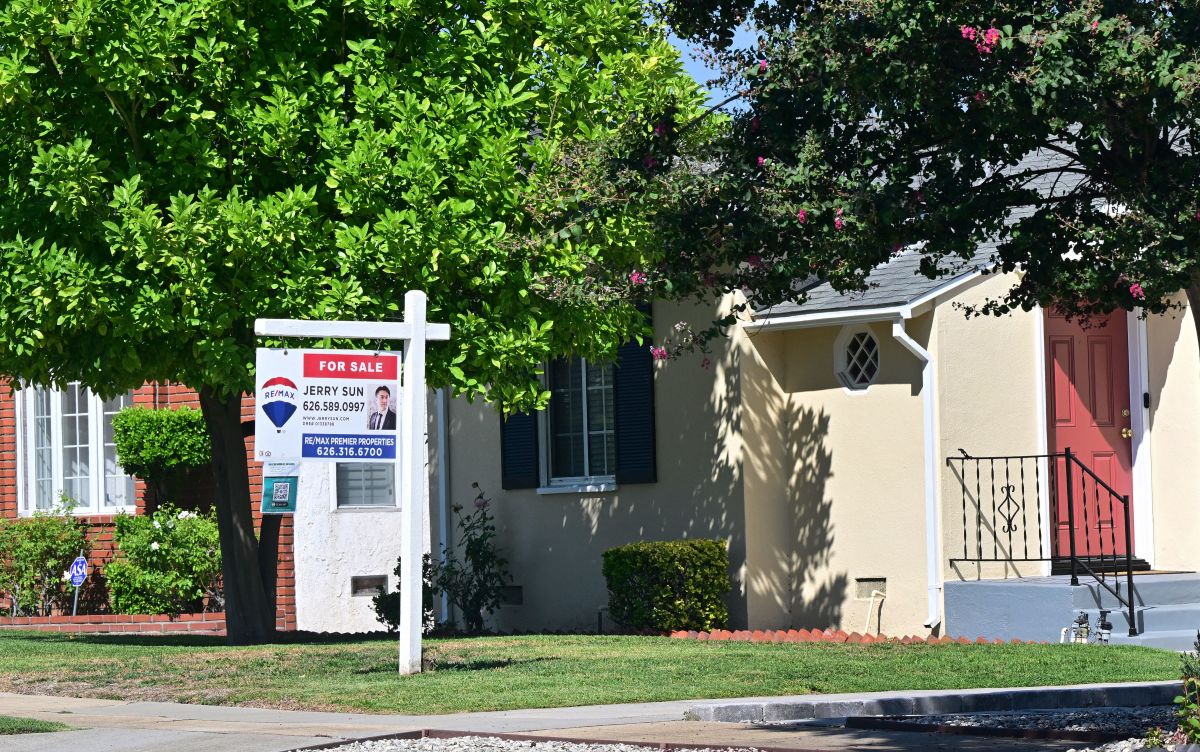
Springtime is spreading across the country. You can see it as daffodil, camellia, tulip and other blossoms start to emerge.
You can also see it in the increasing number of for sale signs popping up in front of homes, along with the painting, gardening and general sprucing up as buyers get ready to sell.
Which leads to two questions:
- How is the real estate market this spring?
- Where are mortgage rates?
What buyers and sellers face
The housing market is bedeviled with supply shortages, high prices and slow sales.
Mortgage rates are still high and may limit what a buyer can offer and a seller can expect.
Related: Analyst warns that a TikTok ban could lead to major trouble for Apple, Big Tech
And there's a factor not expected that may affect the sales process. Fixed commission rates on home sales are going away in July.
Reports this week and in a week will make the situation clearer for buyers and sellers.
The reports are:
- Housing starts from the U.S. Commerce Department due Tuesday. The consensus estimate is for a seasonally adjusted rate of about 1.4 million homes. These would include apartments, both rentals and condominiums.
- Existing home sales, due Thursday from the National Association of Realtors. The consensus estimate is for a seasonally adjusted sales rate of about 4 million homes. In 2023, some 4.1 million homes were sold, the worst sales rate since 1995.
- New-home sales and prices, due Monday from the Commerce Department. Analysts are expecting a sales rate of 661,000 homes (including condos), up 1.5% from a year ago.
Here is what buyers and sellers need to know about the situation.
Mortgage rates will stay above 5%
That's what most analysts believe. Right now, the rate on a 30-year mortgage is between 6.7% and 7%.
Rates peaked at 8% in October after the Federal Reserve signaled it was done raising interest rates.
The Freddie Mac Primary Mortgage Market Survey of March 14 was at 6.74%.
Freddie Mac buys mortgages from lenders and sells securities to investors. The effect is to replenish lenders' cash levels to make more loans.
A hotter-than-expected Producer Price Index released that day has pushed quotes to 7% or higher, according to data from Mortgage News Daily, which tracks mortgage markets.

TheStreet
On a median-priced home (price: $380,000) and a 20% down payment, that means a principal and interest rate payment of $2,022. The payment does not include taxes and insurance.
Last fall when the 30-year rate hit 8%, the payment would have been $2,230.
In 2021, the average rate was 2.96%, which translated into a payment of $1,275.
Short of a depression, that's a rate that won't happen in most of our lifetimes.
Most economists believe current rates will fall to around 6.3% by the end of the year, maybe lower, depending on how many times the Federal Reserve cuts rates this year.
If 6%, the payment on our median-priced home is $1,823.
But under 5%, absent a nasty recession, fuhgettaboutit.
Supply will be tight, keeping prices up
Two factors are affecting the supply of homes for sale in just about every market.
First: Homeowners who had been able to land a mortgage at 2.96% are very reluctant to sell because they would then have to find a home they could afford with, probably, a higher-cost mortgage.
More economic news:
- Fed members just hat-tipped what's next for interest rates
- Retail sales tumble clouds impact of inflation data
- Jobs report shocker: 353,000 hires crush forecasts, stokes inflation fears
Second, the combination of high prices and high mortgage rates are freezing out thousands of potential buyers, especially those looking for homes in lower price ranges.
Indeed, The Wall Street Journal noted that online brokerage Redfin said only about 20% of homes for sale in February were affordable for the typical household.
And here mortgage rates can play one last nasty trick. If rates fall, that means a buyer can afford to pay more. Sellers and their real-estate agents know this too, and may ask for a higher price.
Covid's last laugh: An inflation surge
Mortgage rates jumped to 8% or higher because since 2022 the Federal Reserve has been fighting to knock inflation down to 2% a year. Raising interest rates was the ammunition to battle rising prices.
In June 2022, the consumer price index was 9.1% higher than a year earlier.
The causes of the worst inflation since the 1970s were:
- Covid-19 pandemic, which caused the global economy to shut down in 2020. When Covid ebbed and people got back to living their lives, getting global supply chains back to normal operation proved difficult.
- Oil prices jumped to record levels because of the recovery from the pandemic recovery and Russia's invasion of Ukraine.
What the changes in commissions means
The long-standing practice of paying real-estate agents will be retired this summer, after the National Association of Realtors settled a long and bitter legal fight.
No longer will the seller necessarily pay 6% of the sale price to split between buyer and seller agents.
Both sellers and buyers will have to negotiate separately the services agents have charged for 100 years or more. These include pre-screening properties, writing sales contracts, and the like. The change will continue a trend of adding costs and complications to the process of buying or selling a home.
Already, interest rates are a complication. In addition, homeowners insurance has become very pricey, especially in communities vulnerable to hurricanes, tornadoes, and forest fires. Florida homeowners have seen premiums jump more than 102% in the last three years. A policy now costs three times more than the national average.
Related: Veteran fund manager picks favorite stocks for 2024







